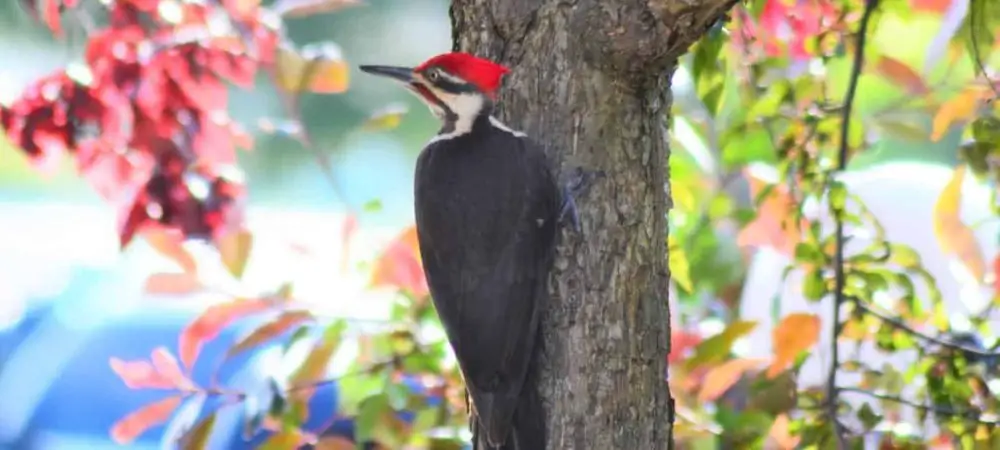
Want to learn more? Take a look at the North American Guide to Woodpeckers
Connecticut is a state located in The United States’ Southern New England region.
This state is known for its blend of coastal cities, rural areas, and small towns. This eclectic mix offers an impressive 139 state parks throughout Connecticut.
These parks provide ample opportunities for outdoor activities and plenty of chances for wildlife observations.
Northern Connecticut offers a climate with cold winters and moderate snowfall with hot, humid summers. However, the southern and coastal regions of Connecticut have a climate with cool winters with rain and snow, and long hot, humid summers.
This interesting landscape and climate provide a home to 7 species of woodpecker. Below are detailed profiles on each species.
You’ll be most likely to spot the Downy Woodpecker, while you are least likely to observe the Red-headed Woodpecker.
Take a look at our article on How to Attract Woodpeckers?
What Woodpeckers can be seen in Connecticut?
Table of Contents
1. Red-bellied Woodpecker
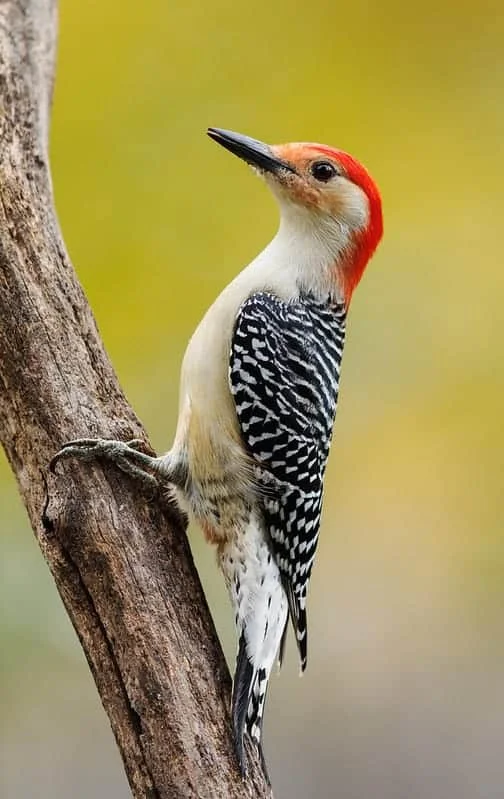
Wingspan
15-18 inches
Weight
2.65 ounces
Life Expectancy
12 years
Diet
Insects
Red-Bellied Woodpeckers are medium to large-sized woodpeckers with black and white feathers on their wings, but pastel-colored undersides.
Both the male and female adults display a red nape, while only the adult males have red crowns.
These woodpeckers can adapt to a number of forested areas and have been known to live in residential areas and parks with tree shade.
Until recent years, this species of woodpecker did not breed in Connecticut!
Now, however, the woodpeckers breed in early spring as males make their nesting areas in dead tree trunks every year. You can easily identify Red-Bellied Woodpeckers by their unique ‘kwirr’ and ‘churr’ sounds.
2. Downy Woodpecker
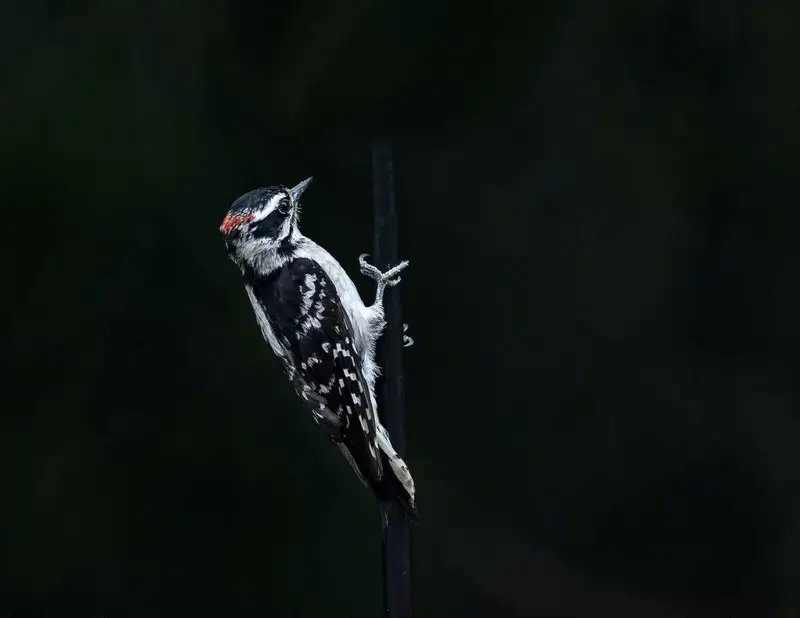
Wingspan
3.27 to 4.13 inches
Weight
0.75 to 1 ounce
Life Expectancy
12 Years
Diet
Insects & Non-insect arthropods
Downy Woodpeckers are known to be the smallest woodpecker species in the continent of North America.
These woodpeckers are black with white undersides and white spotting on their backs with an accompanying white stripe.
Downy Woodpeckers usually take habitat in Connecticut’s woodlands and orchards, and they even visit some suburban or residential areas.
They nest in the cavities of nearby trees and shrubs. You’ll find these woodpeckers during the spring as they drum on trees, posts, and other wooden objects.
Male woodpeckers have notably loud, continuous, quick drumming patterns as they attract female attention.
3. Hairy Woodpecker
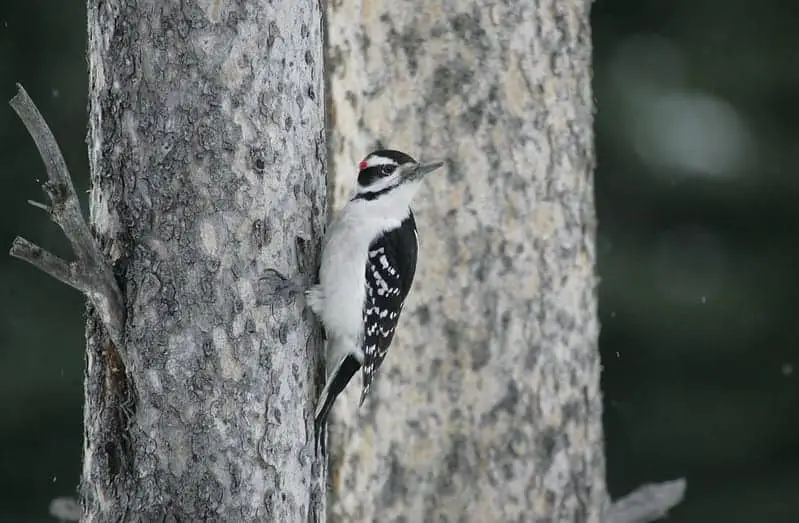
Wingspan
15 inches
Weight
1.4 to 3.4 ounces
Life Expectancy
15 years
Diet
Wood-boring insects & tree sap
Hairy Woodpeckers are medium birds with black wings, white spotting, and a white stripe down its back.
In contrast, however, these woodpeckers have white underbellies. Adult male Hairy Woodpeckers are known for the red-orange color on their heads.
Hairy Woodpeckers take habitat in mature, mixed forests where they search for wood-boring insects.
They can readily be spotted at tree trunks during summer months doing their foraging and excavating their nests. You’ll easily recognize this species due to its high-pitched call that warns others about possible dangers.
4. Pileated Woodpecker
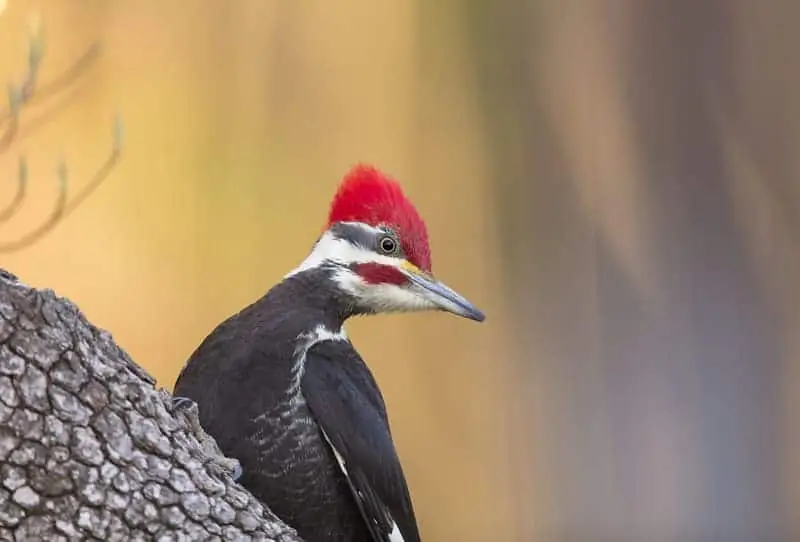
Wingspan
26 to 30 inches
Weight
8.8 to 14.1 ounces
Life Expectancy
13 years
Diet
Fruit, nuts & insects
Pileated Woodpeckers are the largest woodpecker species in Connecticut, and they are the second largest woodpecker species in the United States.
These woodpeckers have black undersides, wings, and backs. They are also known for their white necks and red crest extending from the forehead to the nape.
Pileated Woodpeckers prefer large deciduous or mixed forests, although they can be found in some wooded parks.
These birds can especially be seen in March and April as they make rectangle shaped excavations in dead trees, preparing their nesting sites. It is interesting to note that Pileated Woodpeckers have the same mate for life.
These birds are also highly recognizable due to their vocal nature. Pileated Woodpeckers offer a high, clear, series of piping calls that can last up to several seconds.
5. Yellow-bellied Sapsucker
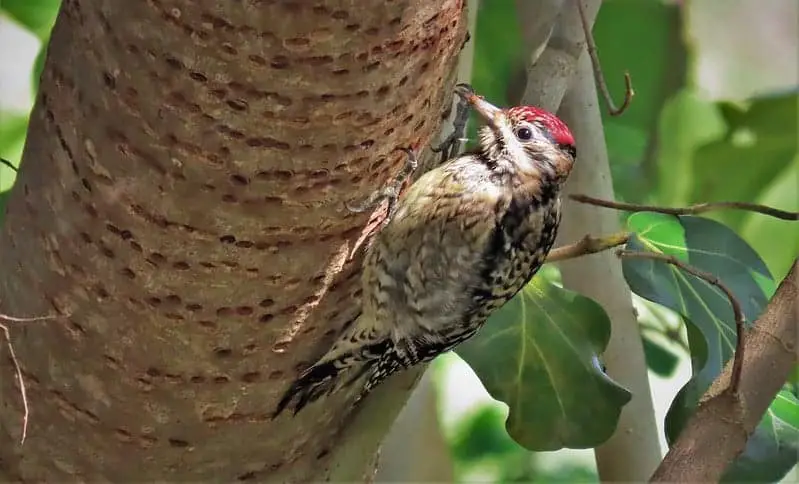
Wingspan
13 to 16 inches
Weight
1.5 to 1.9 ounces
Life Expectancy
7 years
Diet
Tree sap, insects & fruit
Yellow-Bellied Sapsuckers are recognized as medium-sized birds with black wings and white feathers on their backs.
They are also very distinguishable by a longitudinal wing stripe and their famous, yellow colored underbellies with streaky patterned markings.
The adult male sapsuckers are recognized by their red foreheads and throats, though females have white feathers on their throats.
These woodpeckers prefer to take habitat in forests, woodlots, and orchards where they forage for sap, insects, and tree buds.
They can primarily be seen in the late spring and summer months as they build their nests in small tree groves.
You’ll recognize the markings of yellow-bellies by their neatly drilled vertical and horizontal holes. You’ll easily hear these birds when they give their noisy call that resembles a cat’s meow.
6. Northern Flicker
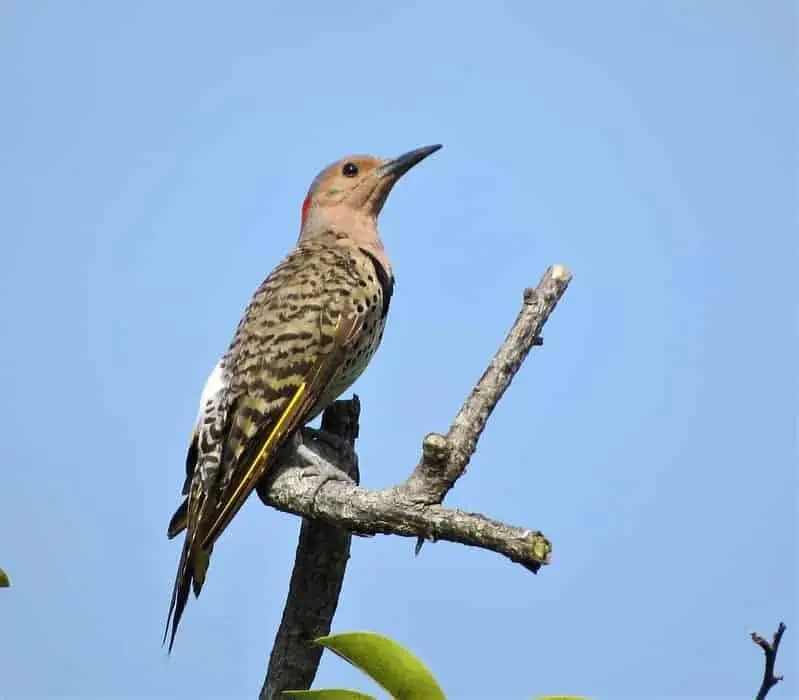
Wingspan
21.3 inches
Weight
6 ounces
Life Expectancy
9 Years
Diet
Insects, seeds, nuts & fruit
Northern Flickers are classified as large woodpeckers featuring a tan face and a pastel grayish colored underside with black spotting.
The adult males of this species have a red stripe on their cheek. These flickers prefer to take habitat in the open country in close proximity to large trees, forest edges, parks, and even some of Connecticut’s residential areas.
They can most easily be spotted from March to mid-June during their breeding season and while foraging.
These woodpeckers can be easily recognized as their white feathers are clearly shown while in flight. Northern Flickers are adored for their ‘wake-up’ call that is often given in a rhythmic pattern.
7. Red-headed Woodpecker
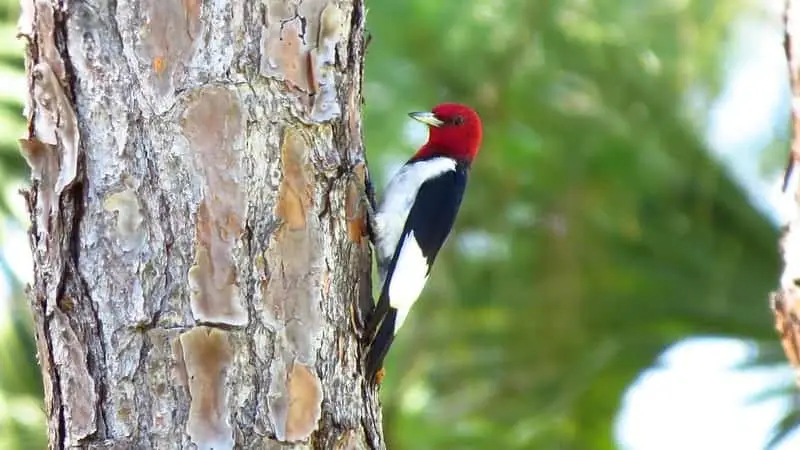
Wingspan
16 inches
Weight
2.5 ounces
Life Expectancy
9 Years
Diet
Insects & Berries
Red-Headed Woodpeckers are a medium sized species of woodpecker and are the only North American woodpeckers with entirely red heads and necks.
Their backs, however, are solid black, and they have white bellies. Additionally, you’ll notice that they have white feathers on their rumps, and white wing patches on their dark colored wings.
Red-headed Woodpeckers prefer to live in deciduous forests throughout the state of Connecticut, while they’ve also been spotted in groves of large trees in fields, and even wooded swamps.
You can also spot these birds in flight as they attempt to catch insects since they do not excavate holes for food.
Take note, however, that these woodpeckers are particularly territorial! Red-headed Woodpeckers are often easily found by listening for their cackling ‘tchur’ call.

More Articles.
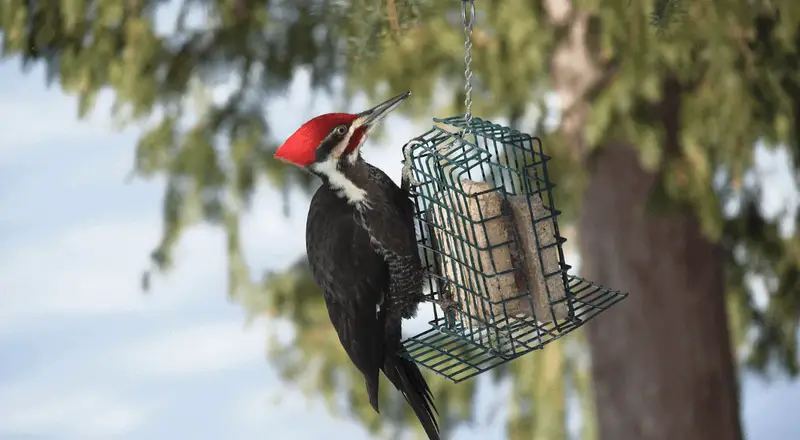
How to attract Woodpeckers to your yard?
Woodpeckers are often elusive to the sight but distinct to the ears. Their famous pecking

Cardinals are one of the most beautiful birds around and are known to delight birdwatchers
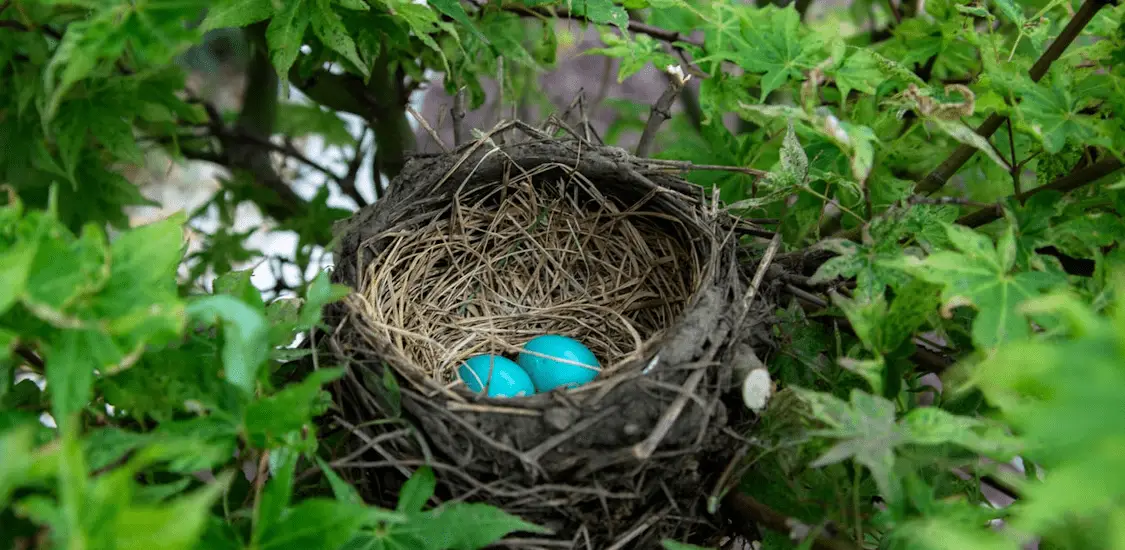
How to safely remove a birds nests?
First ensure that it is legal to remove the birds nests. An empty and abandoned

About Us
We are avid bird-watchers who recently retired, allowing us more time to travel the world. Fortunately, we have managed to visit numerous countries around Europe, Asia, and America. Watching and photographing birds has been a passion for many years and we are making the most of the extra time on our hands!
